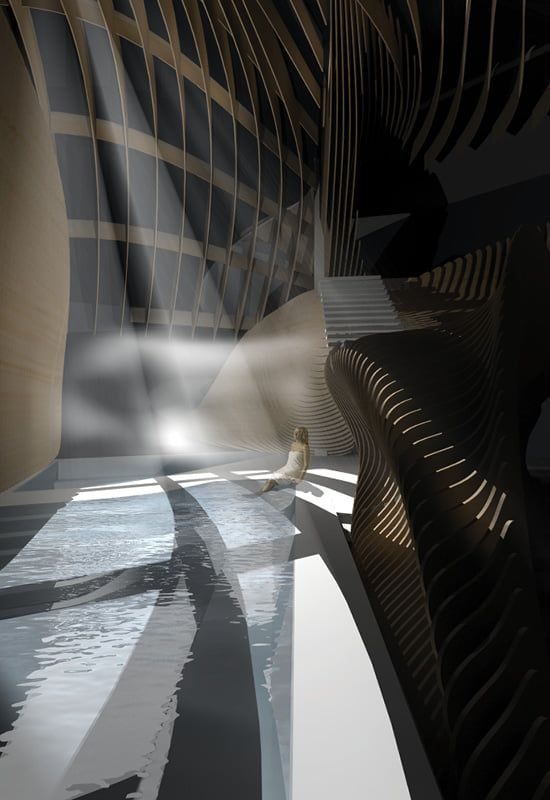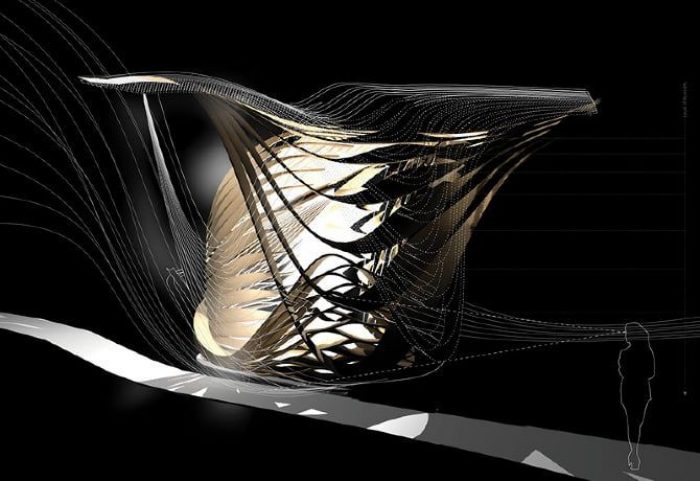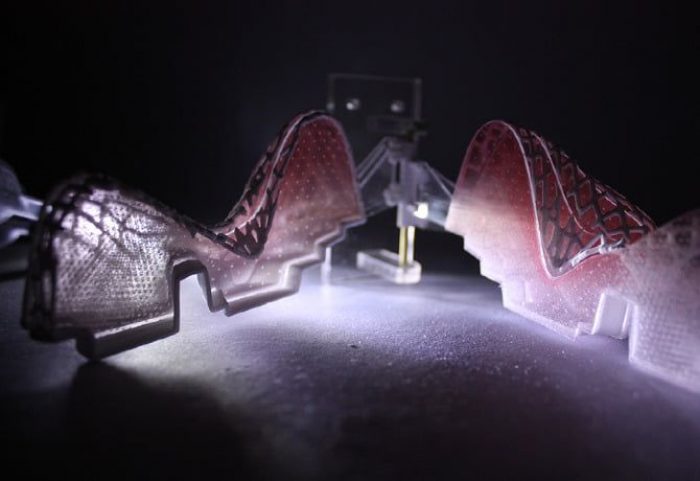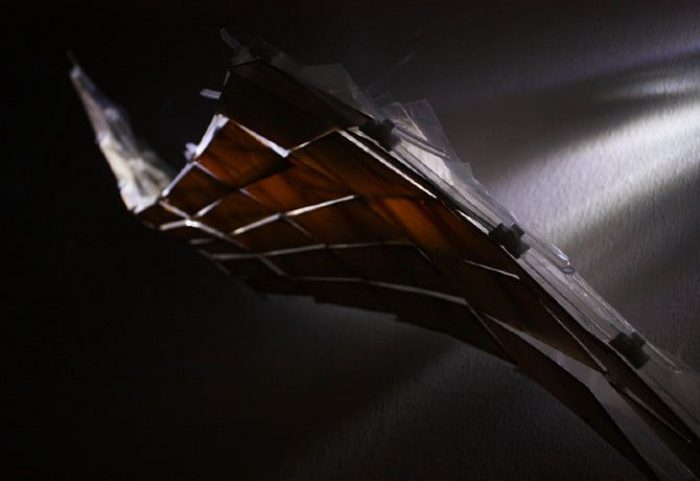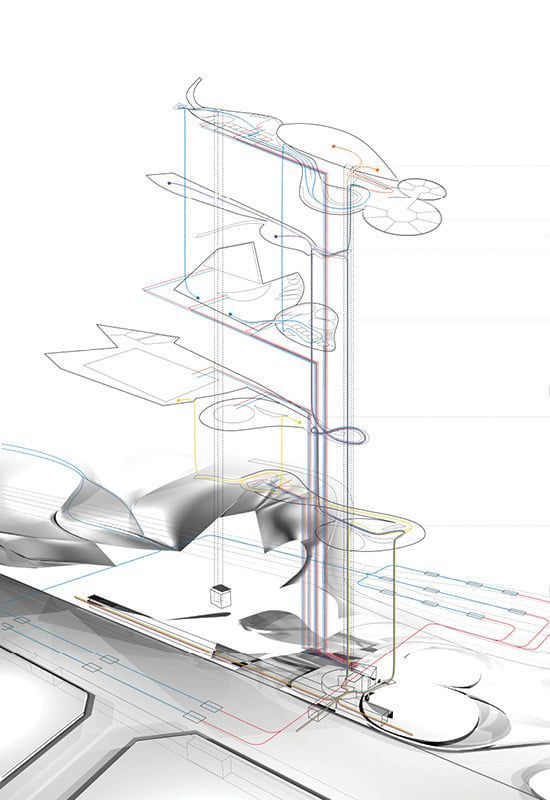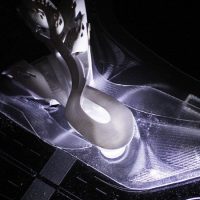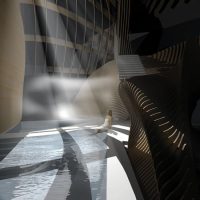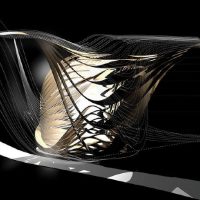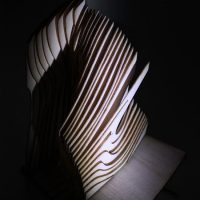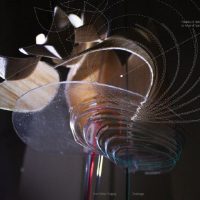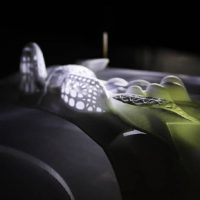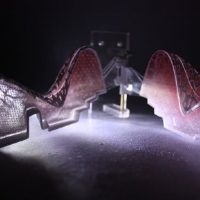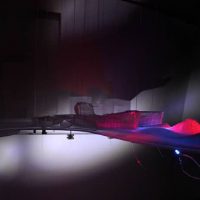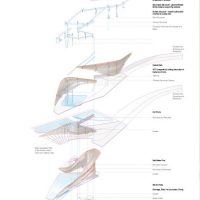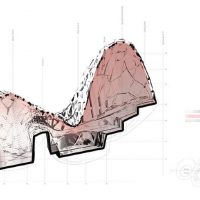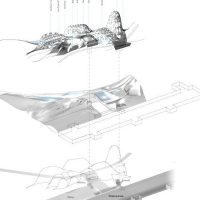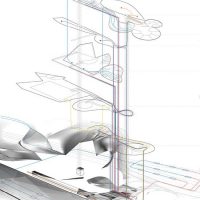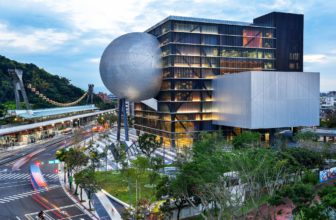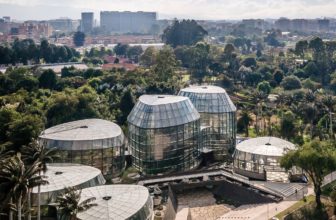Linda Hagberg shared with us her design for ‘Taipei Herbal Baths’ investigates a new mode of responsive architecture based on the interaction between inherent material behavior and environmental variations. The hygroscopic capacity of wood, its reaction to the surrounding levels of humidity, is utilized to construct a climate responsive architecture. The project explores the relationships between the bather, releasing moisture to the environment, and the climate, causing fluctuations in relative humidity which, in turn, triggers the changes of material-innate movements of the responsive wood boundaries.
Site Strategy and Heat Waste Extraction
The project is located in central Taipei, in an area between the Danshui River; the main river originating in the mountainous areas surrounding Taipei, crossing the valley of the city before ending in East China Sea, and Taipei Main Station; a busy transport hub for buses, trains and underground, connecting Taipei to the rest of Taiwan.
Two main issues of the site are addressed; 1. the expanding urban heat island, the increased temperature in Taipei caused by dense transport infrastructure around the mainstation and 2. the complete disconnection between the river and the city by a 10m tall buffer wall installed to protect the city from flooding. The response to these issues include removing the existing buffer wall and replacing it with a landscape able to respond to varying levels of water. The landscape filters the water from River Danshui and the water is used to extract redundant heat from existing underground transport infrastructure, constructing an environmentally sustainable system directly influenced by the varying levels of water and the heat produced by the flow of people through the site. The heated water is used with a heat exchanger to warm up water for the pools in the bath, the steam areas and saunas.
Program and Spatial Layout
The building contains two main areas; the more private herbal baths and the more public aquatic sports centre. As the building is located on the border between one of Taipei’s most busy roads and a pedestrian landscape, the spaces are arranged according to level of privacy required. The most public spaces, entrances and the aquatic sports centre, are located adjacent to the main road, pedestrian paths and Taipei mainstation. The more private spaces and Herbal Baths are located and oriented towards the landscape and the most private spaces, changing rooms and showers are located in the heart of the building.
Material System Responding to Environment
According to the function of each space contained in Taipei Herbal Baths and Aquatic Sports Centre, these call for varying levels of privacy. The humid areas; baths, showers, steam rooms and saunas generally require more privacy and therefore a more opaque boundary is suitable when the space is in use. By associating the moisture content in the surrounding air to the privacy required, the transparency of the boundary screen varies and a climate-responsive approach is achieved. When the level of humidity increases the screen becomes opaque, providing an increased privacy for the inhabitant.
Climate-responsiveness in architecture is usually enabled with the help of electronic sensors, regulating devices and mechanical movements but by researching biological systems, a far more integrated approach is found; the responsive capacity being ingrained in the inherent qualities of the material itself.
The increased level of privacy for the Herbal Baths is achieved with screens constructed from wood which is responsive to climatic variations. The screens are designed specifically to react to increased levels of moisture in the air by enclosing the space around the bather.
The controlled release of moisture to the air results in varying levels of humidity used to trigger the responsive capacity that is ingrained in the wood’s hygroscopic behaviour and anisotropic characteristics (different material properties depending on its grain directionality). The hygroscopic property of wood is a process of absorbing and releasing moisture to match the humidity content of the surrounding environment which causes the wood to swell, shrink and deform accordingly. The process is completely reversible and the wood will regain its original shape once the humidity level is back to original. This dimensional change is researched and employed to trigger the shape change of a series of responsive elements, opening and enclosing the herbal bath pods.
Herbal Baths
A herbal bath is an ancient form of Chinese Medicine where a person soaks in hot water and herbs according to the person’s status of qi. Qi is the ‘circulating life energy’ that in Chinese philosophy is thought to be inherent in all things. The preparation of the bath and the herbs, as well as the bath itself follows traditional guidelines and a particular timescale, the herb decoction boils for 20 minutes, the 42°C bath is prepared and the person soaks for 30 minutes.
During the preparation and implementation of a herbal bath, moisture is released to the environment. This moisture is being used to trigger woods hygroscopic capacity to change shape and enclose the herbal bath pod. The increased level of moisture in the air lasts for about 20 minutes and when the humidity level decreases, the effect on the wood is reversible and the pod ‘opens’ again.
Responsive Spatial Gradients
This project explores a space intrinsically affected by the inhabitant (the bather), the environmental condition (humidity), and the material used for edge-defining boundaries (wood). It proposes ‘Responsive Spatial Gradients’, the synergy and feedback loop between the bather and his/her activities releasing humidity to the environment, the level of humidity affecting the hygroscopic properties of the wood boundary, which together results in changes of the spatial organization. The architectural approach responds to and reflects these particular parameters, staging a timed ‘performance’, a translation of a specific situation and climatic condition in relation to the properties of the material defining a particular spatial organization.
- Courtesy of Linda Hagberg
- Courtesy of Linda Hagberg
- Courtesy of Linda Hagberg
- Courtesy of Linda Hagberg
- Courtesy of Linda Hagberg
- Courtesy of Linda Hagberg
- Courtesy of Linda Hagberg
- Courtesy of Linda Hagberg
- Courtesy of Linda Hagberg
- Courtesy of Linda Hagberg
- Courtesy of Linda Hagberg
- Courtesy of Linda Hagberg
- Courtesy of Linda Hagberg
- Courtesy of Linda Hagberg
- Courtesy of Linda Hagberg
- Courtesy of Linda Hagberg
- Courtesy of Linda Hagberg
- Courtesy of Linda Hagberg
- Courtesy of Linda Hagberg
- Courtesy of Linda Hagberg
Courtesy of Linda Hagberg


